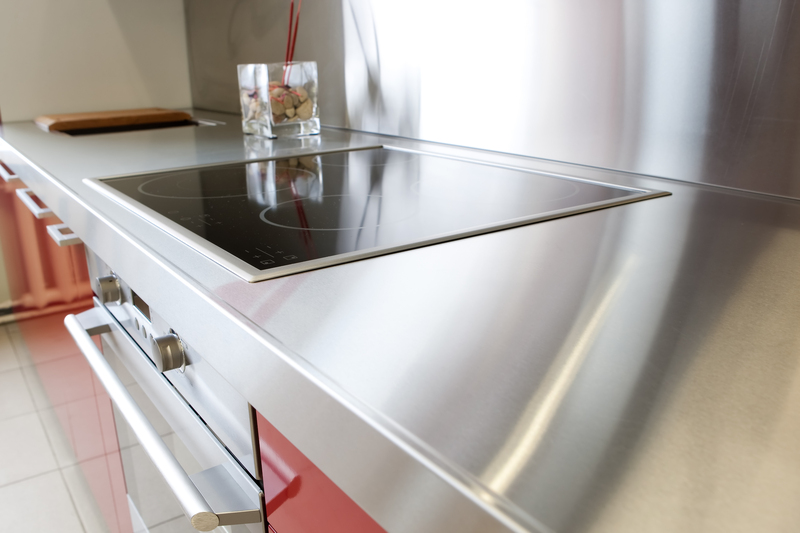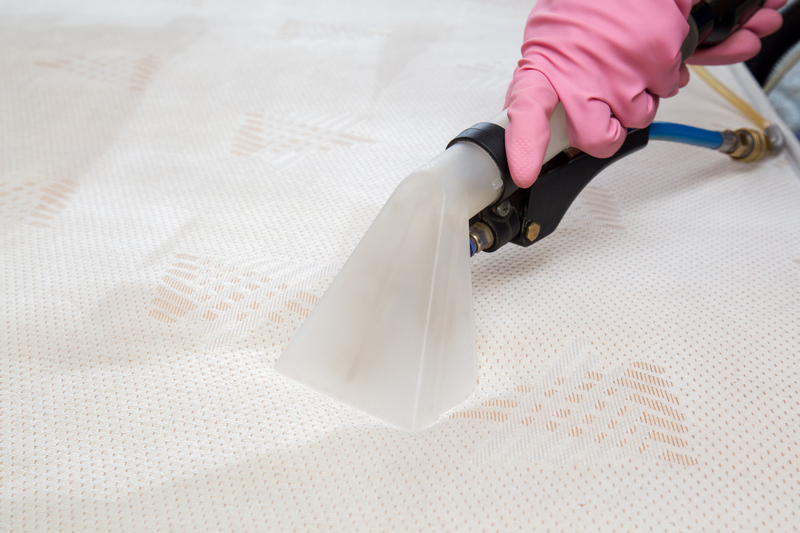Simple Hacks to Clean Stovetop Burnt Residue Effectively
Posted on 28/09/2025
Simple Hacks to Clean Stovetop Burnt Residue Effectively
Struggling with burnt-on residue and stubborn grease on your stovetop? It's a common battle in most kitchens, but you don't have to rely on expensive chemical cleaners or spend endless minutes scrubbing. With the right know-how and a few household staples, you can restore your stovetop's shine safely and effortlessly. In this comprehensive guide, we'll explore how to clean stovetop burnt residue effectively using tried-and-true methods that really work.
Why Does Burnt Residue Accumulate on Stovetops?
Cooking inevitably produces spills and splatters. Over time, food, grease, and liquids can burn onto the surface of your stove. This burnt residue not only looks unsightly but also affects your cooking efficiency and may harbor bacteria.
- Gas Stovetops: Prone to grime around burners and grates, especially if food falls through or boils over.
- Electric Stovetops: Flat surfaces can get stained by spills and burnt-on sugar or sauces.
- Glass and Ceramic Tops: Sensitive to scratching, but notorious for showing every drip and spot.
Understanding the type of stovetop you own is crucial, as it determines the safest and most effective cleaning method.

Preparation: What You Need Before Cleaning Stovetop Burnt Residue
Before beginning, assemble your cleaning arsenal. Most of these items are already in your home.
- Baking soda
- Distilled white vinegar
- Lemon juice
- Dish soap
- Microfiber cloths or soft sponges
- Old toothbrush or soft scrub brush
- Plastic or silicone scraper (avoid metal)
- Spray bottle
- Paper towels
Tip: Always ensure your stove is cool and, if possible, unplugged before you start cleaning to avoid burns or electric shock.
Hack 1: Baking Soda and Vinegar Combo
Why It Works
Baking soda is a gentle abrasive that helps lift stuck-on food, while vinegar cuts grease and reacts with baking soda to bubble away stubborn spots. This duo is especially effective for removing burnt stovetop residue naturally.
Step-by-step Guide
- Make a Paste: Mix 3 tablespoons of baking soda with 1 tablespoon of water until you get a thick paste.
- Apply: Spread the paste over the burnt areas. Let it sit for 15-30 minutes to loosen grime.
- Spray Vinegar: Using a spray bottle, mist white vinegar over the baking soda paste. It will fizz and start breaking down the residue.
- Scrub Gently: Use a soft sponge or an old toothbrush to scrub the stains. For stubborn spots, repeat the process.
- Wipe Clean: Remove excess paste with a damp cloth, then dry with a clean towel.
Bonus Tip: For hard-to-remove residue, cover the paste with a damp warm towel and let it sit longer before scrubbing.
Hack 2: Lemon Juice and Salt Scrub
Lemon provides natural acidity while salt acts as a mild abrasive. This combination is perfect for tackling stovetop burnt stains, especially on light surfaces.
Instructions
- Cut a lemon in half and dip it in salt.
- Rub: Scrub the affected area in a circular motion, squeezing the lemon gently as you go.
- Let sit for 5-10 minutes to allow the citrus to work its magic.
- Wipe clean: Rinse the spot with a damp cloth and dry.
Why it's effective: The mild abrasiveness of salt, combined with lemon's degreasing power, makes this a natural and fragrant solution for cleaning burnt residue on the stovetop.
Hack 3: Dish Soap and Hot Water for Everyday Maintenance
For less stubborn buildup, regular cleaning with dish soap and hot water can prevent burnt residue from forming.
- Fill a bowl with hot water and a squirt of dish soap.
- Soak a sponge or cloth: Wring it out and place it over the spill or sticky spots. Let it sit for 10 minutes.
- Scrub gently: Wipe away the softened residue.
Pro Tip: Wipe your stovetop after every use to minimize burnt-on messes.
Hack 4: Using a Plastic Scraper for Tough, Burnt-On Gunk
Never use metal scrapers! These can scratch or damage your stovetop. Plastic scrapers are safe and effective for lifting thick, burnt residue.
- Angle the scraper gently under the burnt material and push carefully to lift it off the surface.
- Soften the residue first with a damp cloth, baking soda paste, or dish soap.
- Wipe the area clean with a microfiber cloth.
When to Use This Method
Reserve this hack for the most stubborn burnt-on food that isn't responding to other methods. It's especially useful for glass stovetops where heavy scrubbing isn't ideal.
Hack 5: Steam Cleaning for Burnt Stovetop Residue
Steam loosens sticky, burnt particles without harsh chemicals. It's a safe way to clean stovetop burnt residue effectively without damaging the finish.
- Boil a pot of water on the stove, allowing the steam to rise and saturate the residue for several minutes.
- Turn off the heat and wait a few minutes for the surface to cool slightly.
- Wipe down the stovetop with a soft cloth, removing loosened grime.
- Repeat if needed for heavier buildup.
Important: Be cautious with hot steam. Use oven mitts or gloves for safety and only handle the stovetop when cool enough to touch.
Preventing Burnt Residue: Daily Habits for a Clean Stovetop
Keeping a clean stovetop doesn't have to be a chore. With simple preventative habits, you can avoid excessive burnt-on residue:
- Wipe spills immediately: Address splashes and boil-overs promptly before they harden.
- Use splatter guards: These minimize mess during frying or boiling.
- Regular deep cleans: Dedicate time each week to a more thorough clean using the methods above.
- Avoid overflow: Use appropriate pot sizes and don't overfill pans.
- Burner covers: Protect burners and catch excess drips.
Remember: Consistency is key to making stovetop cleaning easy and quick!
Special Considerations: Cleaning Different Types of Stovetops
Cleaning Gas Stove Burners and Grates
- Remove burner grates: Soak in a mixture of hot water and dish soap or vinegar for 20-30 minutes.
- Scrub gently with a brush to remove residue. Use baking soda paste for tough spots.
- Rinse and dry thoroughly before replacing.
Electric and Coil Burners
- Unplug removable coils and gently wipe with a damp cloth. For persistent buildup, scrub with a little baking soda paste.
- Wipe the drip pans separately using the cleaning hacks mentioned above.
Glass and Ceramic Stovetops
- Always use non-abrasive cleaners and tools.
- Baking soda paste is excellent for lifting residue without scratching.
- Avoid harsh chemicals, which may cloud the glass surface.
Natural and Commercial Alternatives for Cleaning Burnt Stovetop Residue
Homemade cleaners often outperform commercial products in cost and gentleness. However, for deep cleaning or extreme cases, you might opt for specialized stovetop cleaners.
- Homemade Paste Cleaner: Mix equal parts baking soda and hydrogen peroxide for a deep-cleaning paste.
- Eco-Friendly Commercial Products: Choose those labeled safe for your stovetop's surface.
- Avoid bleach or harsh scouring powders, which may discolor or damage your stove.

Frequently Asked Questions About Cleaning Burnt Stovetop Residue
Can baking soda scratch my stovetop?
No, baking soda is gentle enough for most surfaces but always test in an inconspicuous area, especially on glass or ceramic stovetops.
How do I remove years-old burnt residue from my stove?
Apply a baking soda paste and cover with a warm, damp towel for 1-2 hours, then scrape gently with a plastic scraper. Repeat as needed. In severe cases, commercial stovetop cleaners may help.
What should I avoid when cleaning burnt stovetop stains?
- Metal scrapers (they scratch surfaces)
- Abrasive sponges (especially on glass)
- Harsh chemicals like ammonia or bleach
- Scraping while the surface is hot (risk of burns and cracking)
Conclusion: Shine On With a Sparkling Stovetop
Burnt-on stovetop residue doesn't have to be your cleaning nemesis! With these simple, effective hacks and a few household ingredients, you can clean stovetop burnt residue easily and naturally. Regular attention and a proactive approach keep your cooking area safe, hygienic, and inviting.
Try these tips, create your perfect cleaning routine, and enjoy a spotless, gleaming stovetop with minimal effort--ready for your next culinary adventure!





